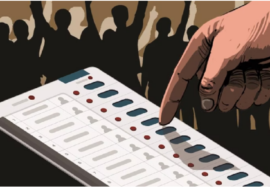parag agrawal: Twitter CEO defends company’s count of spam accounts after Elon Musk criticism
[ad_1]
LONDON: Twitter Inc CEO Parag Agrawal on Monday tweeted that internal estimates of spam accounts on the social media platform for the last four quarters were “well under 5%,” responding to acquirer Elon Musk‘s criticism of the company’s handling of phony accounts.
Agrawal said Twitter’s estimate, which has stayed the same since 2013, cannot be reproduced externally given the need to use both public and private information to determine whether an account is spam.
Musk, who on Friday said his $44 billion deal to buy Twitter was “temporarily on hold” pending information on spam accounts, responded to Agrawal’s defense of the company’s methodology with a poop emoji.
“So how do advertisers know what they’re getting for their money? This is fundamental to the financial health of Twitter,” Musk wrote.
Following the exchange, Twitter shares on Monday fell below levels preceding Musk’s disclosure of a 9.2% stake in the company in early April. The shares were down 7.7%, at $37.50 a share, in afternoon trade. That compares to a closing price of $39.31 on April 1, the last trading day before Musk disclosed his stake.
Musk has pledged changes to Twitter’s content moderation practices, railing against decisions like the company’s ban of former President Donald Trump as overly aggressive while pledging to crack down on “spam bots” on the platform.
Musk has called for tests of random samples of Twitter users to identify bots, or automated accounts, and said he has yet to see “any” analysis that shows spam accounts making up less than 5% of the user base.
Musk said on Sunday “there is some chance it might be over 90% of daily active users.”
Independent researchers have estimated that anywhere from 9% to 15% of the millions of Twitter profiles are automated accounts, or bots.
Twitter does not currently require users to register using their real identities, and automated, parody and pseudonymous profiles are expressly permitted on the service.
It does ban impersonation and spam, and penalizes accounts when the company determines their purpose is to “deceive or manipulate others” by engaging in scams, coordinating abuse campaigns or artificially inflating engagement.
Agrawal said Twitter’s estimate, which has stayed the same since 2013, cannot be reproduced externally given the need to use both public and private information to determine whether an account is spam.
Musk, who on Friday said his $44 billion deal to buy Twitter was “temporarily on hold” pending information on spam accounts, responded to Agrawal’s defense of the company’s methodology with a poop emoji.
“So how do advertisers know what they’re getting for their money? This is fundamental to the financial health of Twitter,” Musk wrote.
Following the exchange, Twitter shares on Monday fell below levels preceding Musk’s disclosure of a 9.2% stake in the company in early April. The shares were down 7.7%, at $37.50 a share, in afternoon trade. That compares to a closing price of $39.31 on April 1, the last trading day before Musk disclosed his stake.
Musk has pledged changes to Twitter’s content moderation practices, railing against decisions like the company’s ban of former President Donald Trump as overly aggressive while pledging to crack down on “spam bots” on the platform.
Musk has called for tests of random samples of Twitter users to identify bots, or automated accounts, and said he has yet to see “any” analysis that shows spam accounts making up less than 5% of the user base.
Musk said on Sunday “there is some chance it might be over 90% of daily active users.”
Independent researchers have estimated that anywhere from 9% to 15% of the millions of Twitter profiles are automated accounts, or bots.
Twitter does not currently require users to register using their real identities, and automated, parody and pseudonymous profiles are expressly permitted on the service.
It does ban impersonation and spam, and penalizes accounts when the company determines their purpose is to “deceive or manipulate others” by engaging in scams, coordinating abuse campaigns or artificially inflating engagement.
[ad_2]
Source link










